The Northern Arena: A Military Challenge Joined by Potential Political and Economic Cooperation
Carmit Valensi, Orna Mizrahi, Yoram Schweitzer, and Eden Kaduri
The Northern Arena: A Military Challenge Joined by Potential Political and Economic Cooperation
Carmit Valensi, Orna Mizrahi, Yoram Schweitzer, and Eden Kaduri
Summary chart
Current Situation
Economic crisis and continued Iranian entrenchment in Syria · Hezbollah maintains military buildup · Lack of governance and economic collapse in Lebanon
Current Israeli Strategy
Campaign between wars in Syria and mutual deterrence vis-à-vis Hezbollah · Non-intervention in Syria or Lebanon on the political level
Israel’s Strategic Gap
Hezbollah’s ongoing buildup and Nasrallah’s false sense of confidence are escalation catalysts · No Israeli strategy vis-à-vis the Lebanese state · Campaign between wars does not neutralize Iranian entrenchment entirely
Strategic Alternatives
Re Hezbollah: 1. Maintain existing policy 2. Improve deterrence with expanded military activity 3. Launch a military action.
Re Lebanon: 1. Continue policy of non-intervention 2. Support efforts to promote stability 3. Advance direct measures while leveraging the gas agreement
Re Syria: 1. Minimal intervention while continuing campaign between wars 2. Increase military and civilian involvement 3. Engage with Assad in order to reduce Iranian influence
Recommended Strategy
Improve deterrence vis-à-vis Hezbollah with expanded military activity · Support international efforts to promote stability in Lebanon and pursue direct moves · Increase involvement in Syria, in campaign between wars and civilian collaboration
Recommended Action
Expand military activity and political and economic warfare to weaken Hezbollah · Prepare possible preemptive strike · Engage US, France, and Gulf states on economic aid to Lebanon · Maximize potential of gas agreement · Update campaign between wars in Syria · Cooperate with Jordan on aid to southern Syria; with US and Kurds on aid to north · Engage with Turkey and Gulf states to reduce Iranian influence
The most significant conventional military threat to Israel is in the northern arena, which includes Lebanon, Syria, and all the actors – state and non-state – operating there. This arena is closely linked with Iran, which is the leader of the radical axis and serves as an ideological and operational hub. An analysis of the northern front requires on the one hand a systemic perspective, especially when it comes to military activity, and in tandem demands separate evaluations of the individual states, especially with respect to civilian dimensions (economic, political, and state).
The approach to Syria and Lebanon as a system is at the basis of Iran and Hezbollah’s military campaign against Israel, which in routine times includes military buildup efforts via local production and the transfer of weapons from Syria to Lebanon. In wartime the campaign is based on combat soldiers in active duty and in the reserves in Lebanon with diverse military capabilities (firepower, special forces, maneuvering forces, surface-to-surface missiles, anti-tank missiles, cruise missiles, and drones), alongside reserve forces in Syria to reinforce the front in Lebanon through firepower and intelligence and divert Israel’s attention. Accordingly, Israel is waging a military campaign on both fronts, while recognizing the reciprocal influence of operations in Syria and in Lebanon. In contrast, with civilian aspects there is little significant interface or shared institutions between the fronts in a way that justifies a systemic analysis. Furthermore, the principal changes in Syria and Lebanon in recent years – both to the Lebanese system, including Hezbollah, and to the Assad regime vis-à-vis Iran – reflect a greater degree of autonomy, which suggests a logic that is more national than systemic.
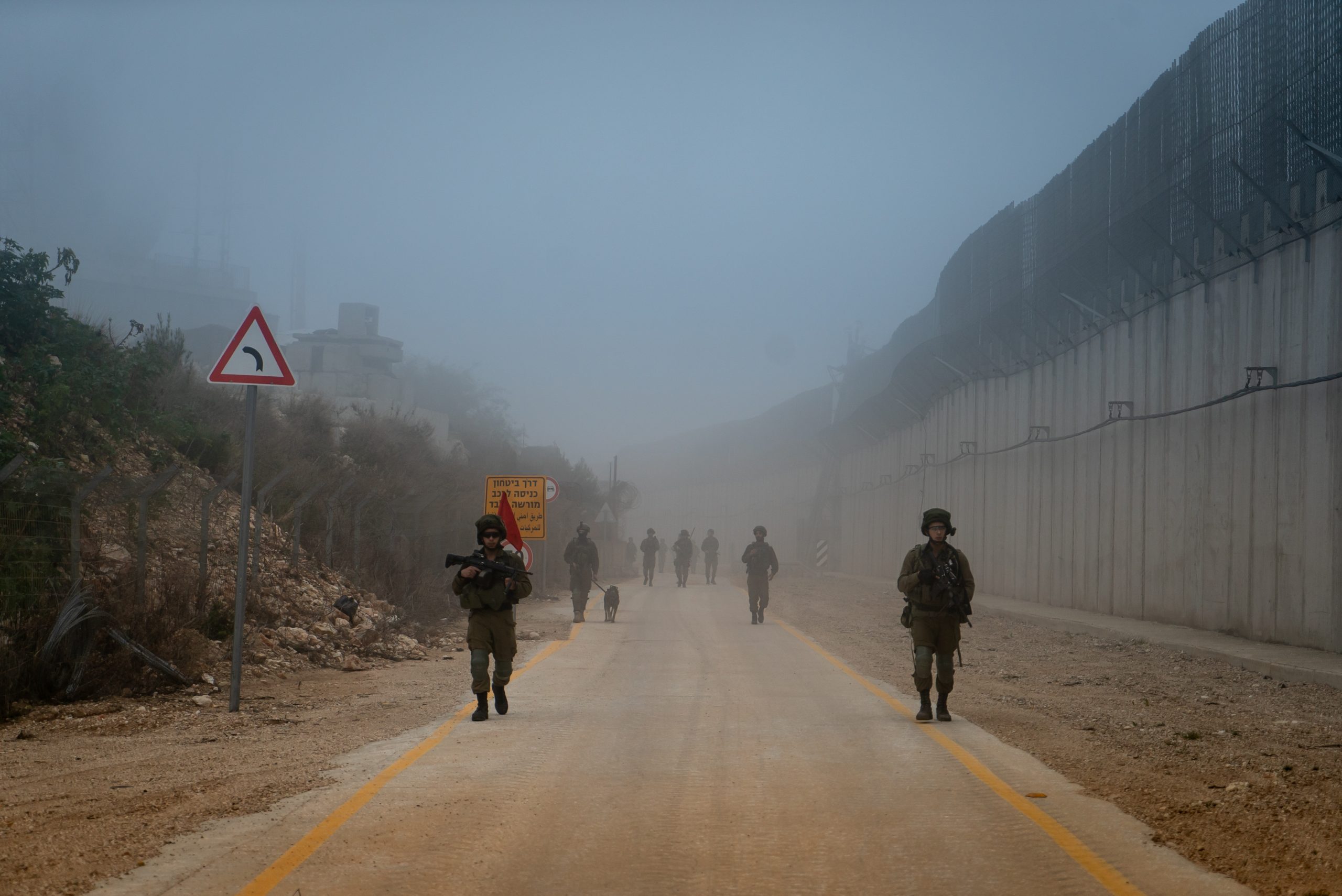
The most significant conventional military threat to Israel is in the northern arena. IDF solders in an exercise along the northern border
Photo: IDF Spokesperson’s Unit (CC BY-NC 2.0)
Lebanon
The current Israeli strategy toward Lebanon focuses on the military threat posed by Hezbollah to Israel, from the Lebanese border as well as from Syria, in light of the organization’s central role in the Iran-led Shiite axis. Israel’s objective in the past year was to maintain quiet and security along its border with Lebanon and improve its ability to meet the Hezbollah threat. This strategy included efforts to hinder the organization’s military buildup, by disrupting the transfer of weapons to Lebanon and reducing its presence along the border with Syria, while maintaining the balance of deterrence and avoiding measures that could trigger escalation. However, no comprehensive Israeli strategy was formulated regarding the state of Lebanon, beset by a severe economic and political crisis, except for a policy of non-intervention in its internal affairs.
The Current Situation
Despite Israel’s ongoing efforts in the campaign between wars (CBW) over the past year, Hezbollah continued its military buildup with Iran’s assistance, even if not at its desired rate and scope. It increased its firepower capabilities, advanced its precision missile program, and expanded its acquisition of drones and air defense systems. Nevertheless, it is evident that the organization is operating in a measured and restrained manner toward Israel, even when it sharpened its threats, for example, before the signing of the maritime border agreement. These threats aimed to maintain a balance of deterrence against Israel and to bolster Hezbollah’s internal standing as “the defender of Lebanon.” Moreover, even if among Hezbollah ranks there is a sense that it can deter Israel, Lebanon’s dire situation and the erosion of the organization’s standing (reflected in the parliamentary elections of May 2022) force it to exercise restraint, and these factors are what prompting it to accept the signing of the agreement between Lebanon and Israel (October 2022) while investing effort, so far successfully, in maintaining its dominant standing in Lebanon.
In the background, Lebanon is still on the fast track to collapse that began in 2019 and led to complete bankruptcy, without any hope of reversal on the horizon. Most of Lebanon’s population live under the poverty line, surviving with great difficulty with the help of money from remittances from workers and families abroad, as well as humanitarian aid, mainly from the West. The lack of governance is evident, inter alia, in the increase in violence, including incidents of civilians robbing banks. In the political arena, while the parliamentary elections were held as planned on May 15, their results have not led to an improvement, but rather have mainly exacerbated the political paralysis, due to the conflicts between the pro-Hezbollah camp and its opponents, and within each camp. The governmental vacuum intensified after the end of President Michel Aoun’s term on October, and to date there is still caretaker government and no new president. In these dire circumstances, the maritime border agreement with Israel was the only development that created hope for change in Lebanon, although it does not guarantee immediate economic benefit.
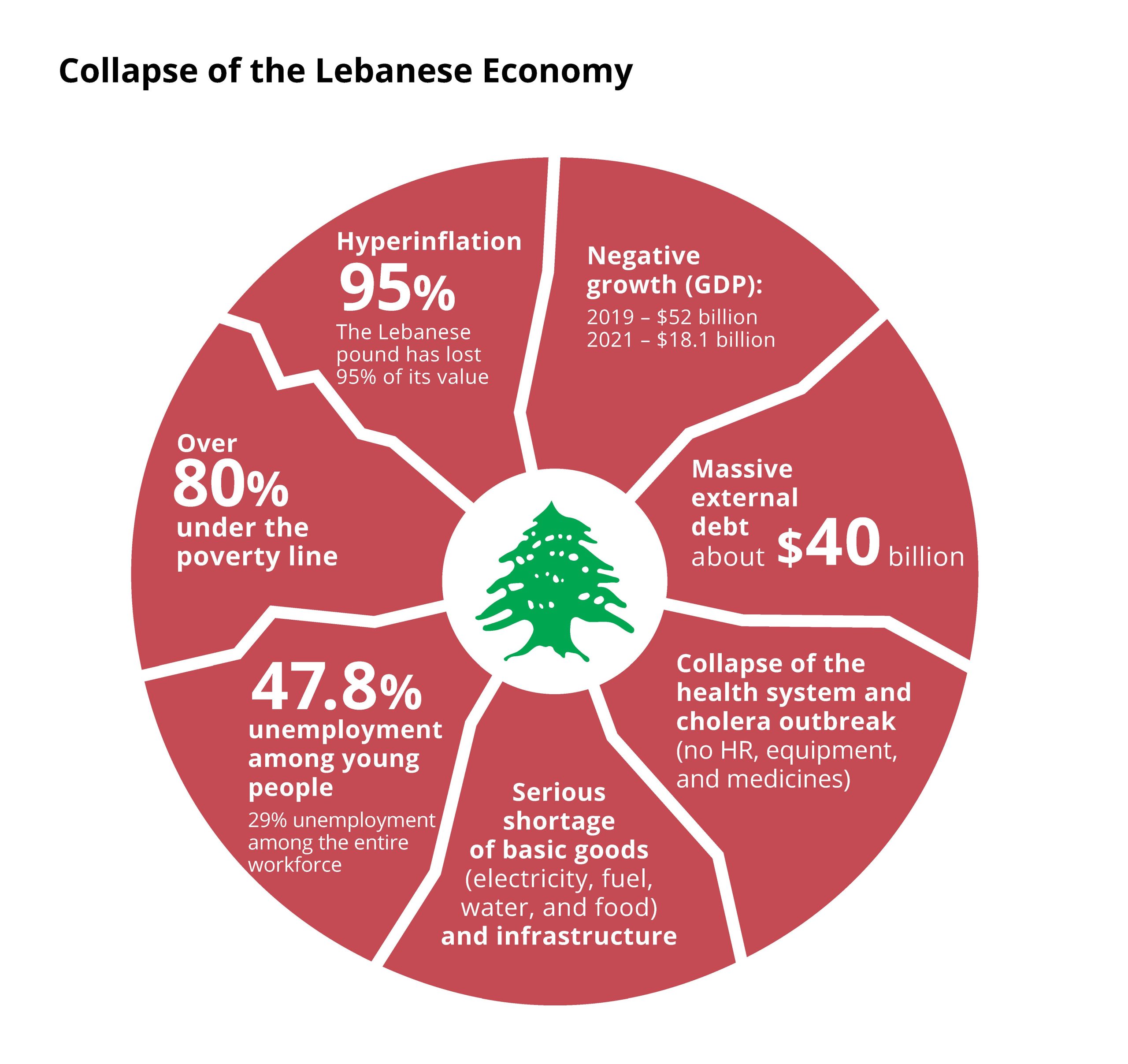
The Gap in Israeli Strategy
A twofold gap is evident in Israel’s strategy. The first regards Hezbollah: there is a lack of sufficient response to the organization’s ongoing military buildup, caused mainly by the desire to avoid getting drawn into a large-scale war, which could pit Israel against the entire Shiite axis. Consequently, Hezbollah gains military power: today it is the main conventional threat to Israel, and Iran’s influence on developments at the Israel-Lebanon border could increase.
The second gap regards the state of Lebanon, with the lack of an up-to-date, comprehensive strategy regarding Israel’s small neighbor to the north and an agreed-upon answer to the question whether Israel has an interest in its collapse.
Strategic Alternatives
Toward Hezbollah
- Continue the existing policy, which centers on maintaining the balance of deterrence
- Improve the balance of deterrence by expanding Israel’s military activity (proactive and reactive) against the organization
- Pursue a formative course of action (to the point of a preemptive strike) even at the price of deterioration toward war
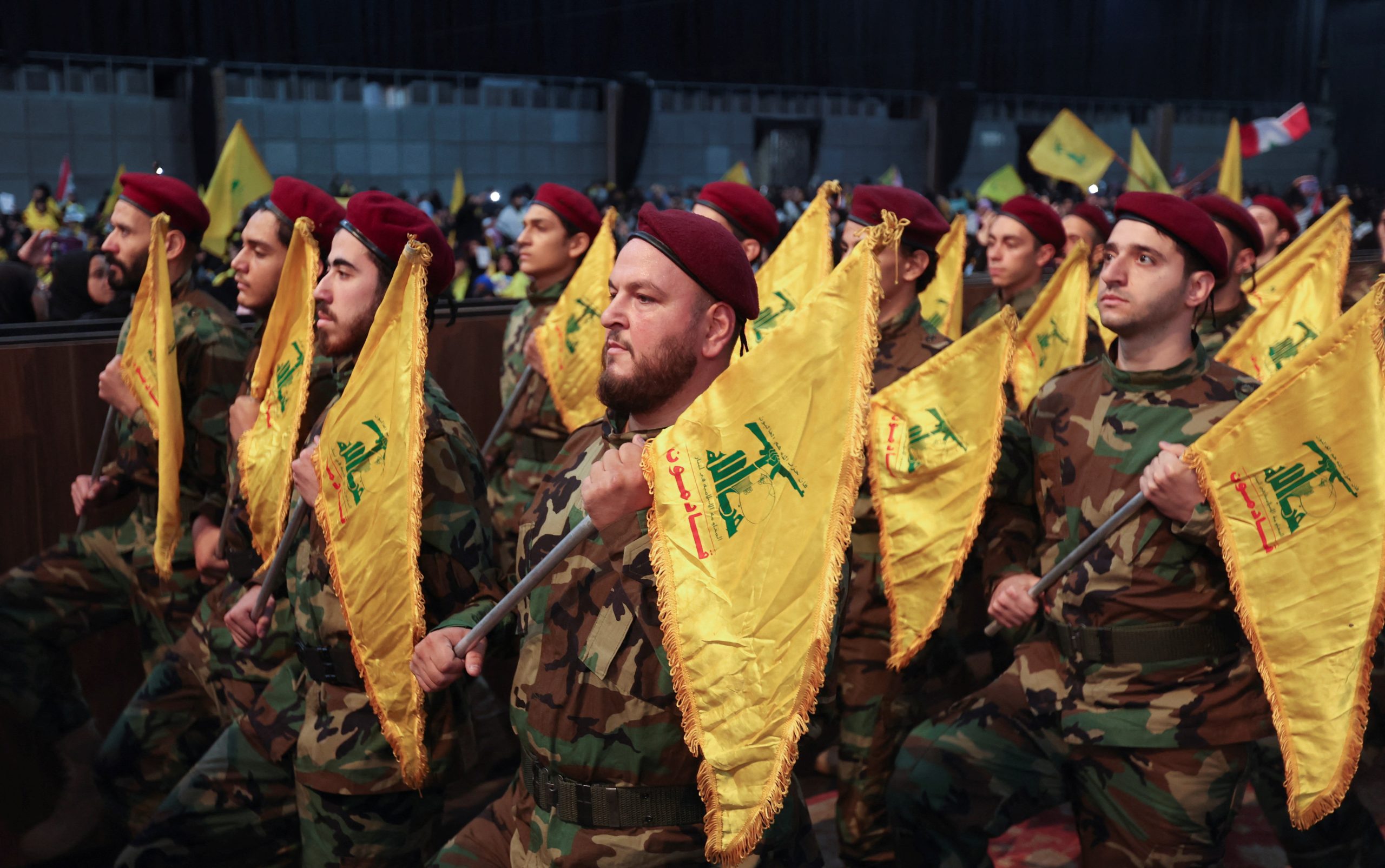
It is necessary to examine the need and the ability to increase Israel’s military activity to prevent Hezbollah’s military buildup. Hezbollah fighters
Photo: REUTERS/Aziz Taher
Toward Lebanon
- Maintain non-intervention in Lebanon’s internal affairs
- Pursue efforts in the international arena to accelerate and expand the attempts to stabilize Lebanon’s internal situation
- Engage in direct political measures regarding Lebanon, while leveraging the natural gas agreement to improve bilateral relations
The Recommended Strategy
On the one hand, Israel has an urgent military need to undermine Hezbollah’s confidence and to maintain the balance of deterrence in its favor. On the other hand, it has a clear interest in the stability of the Lebanese state in order to prevent chaos, which could lead to the complete takeover of the country by Hezbollah and Iran. Consequently, the recommended strategy combines enhanced efforts to weaken Hezbollah with a proactive policy that contributes to stabilization in Lebanon and an improved reality there. In this framework:
- Regarding Hezbollah – in the military sphere, it is necessary to examine continuously the need and the ability to increase Israel’s military activity – mainly reactive – to prevent the organization’s military buildup and to demonstrate Israel’s capabilities, while leveraging the increasing distress in the Lebanese system. Concurrently, Israel should increase its efforts against the organization in the regional and international arenas. In the political sphere: expand the world’s acknowledgment of Hezbollah, in its entirety, as a terrorist organization; in the economic sphere: deepen the sanctions against it and impair its external sources of income abroad; in the cognitive sphere: respond to its extensive activity to damage the morale of the IDF and Israeli civilians.
- Regarding Lebanon: Israel should adopt a proactive policy that aims to enlist Israel’s allies in the region (the Gulf states, and particularly Saudi Arabia) and in the international arena (led by the United States and France) in an effort to expand the economic aid and support the establishment of a stable political system in Lebanon, while reducing the standing and influence of Hezbollah and strengthening its opponents. A mechanism must be created to guarantee that economic aid does not reach Hezbollah. It is also proposed that Israel adhere to the maritime border agreement with Lebanon in order to maximize the potential inherent in it, including agreement that Lebanon join the regional natural gas forum, and adopt a fixed and overt policy on its willingness to aid Lebanon directly, even if it is expected that at this stage the offers of aid will be rejected.
Syria
With Syria the geographic center of the radical axis, the overarching objective in Israel’s defined strategy is to disrupt the Iranian entrenchment and Hezbollah’s military buildup in Syria by preventing the transfer of weapons, disrupting the axis’s military buildup framework, and damaging military infrastructure. Beyond Iranian targets, in the past year the CBW included state targets of the Assad regime, with the purpose of inducing it to restrict Iran’s military activity there. This occurred in coordination with Russia and the United States, both of which have forces in Syrian territory.
Situation Assessment
In 2022 President Bashar al-Assad took steps to reorganize and stabilize state institutions and rebuild the military. However, the stabilization processes face obstacles created by the intensifying economic and humanitarian crisis, as well as the standstill in the map of control and the inability to gain control of the entire Syrian territory, which is currently divided into “four Syrias.”
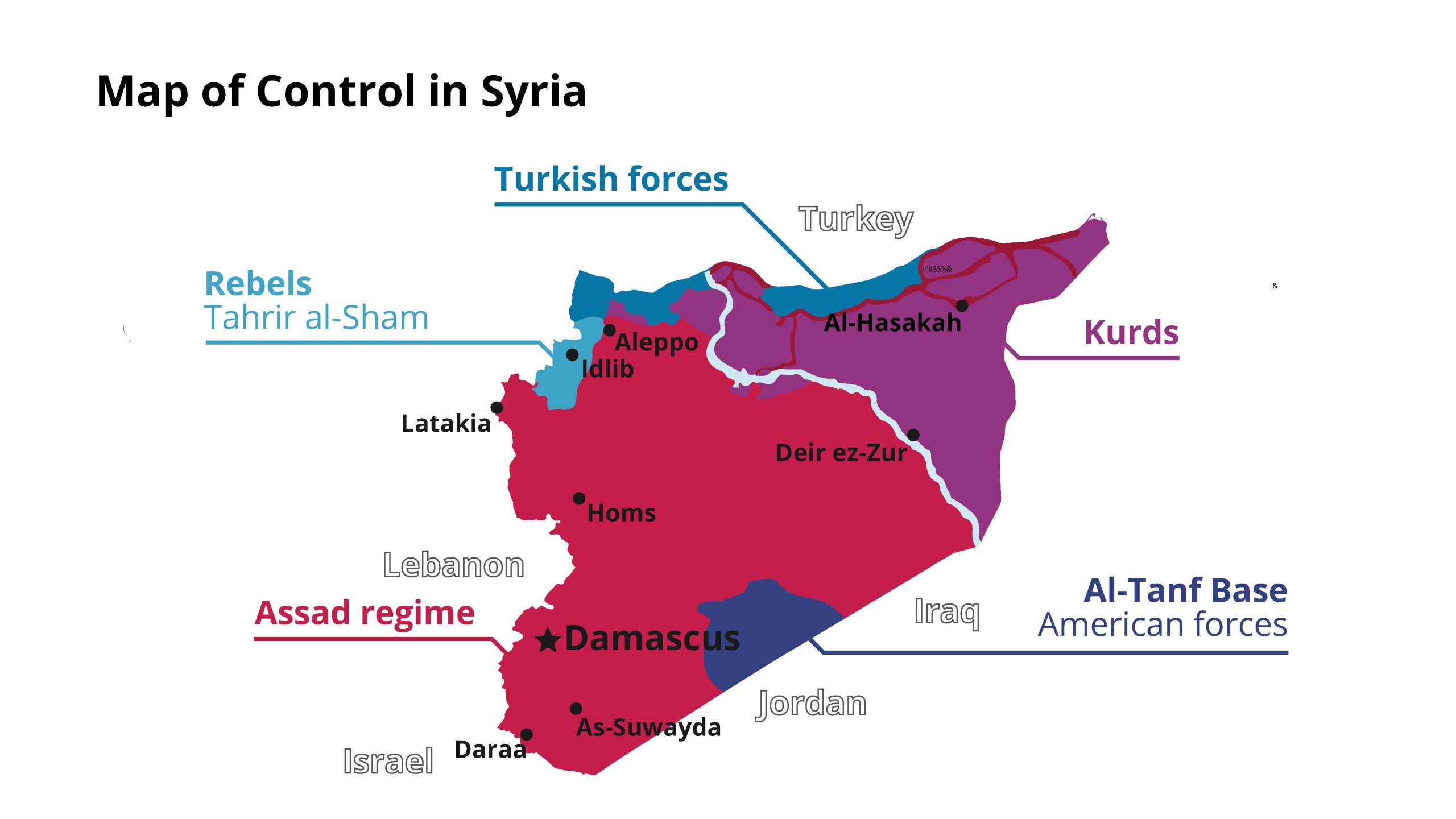
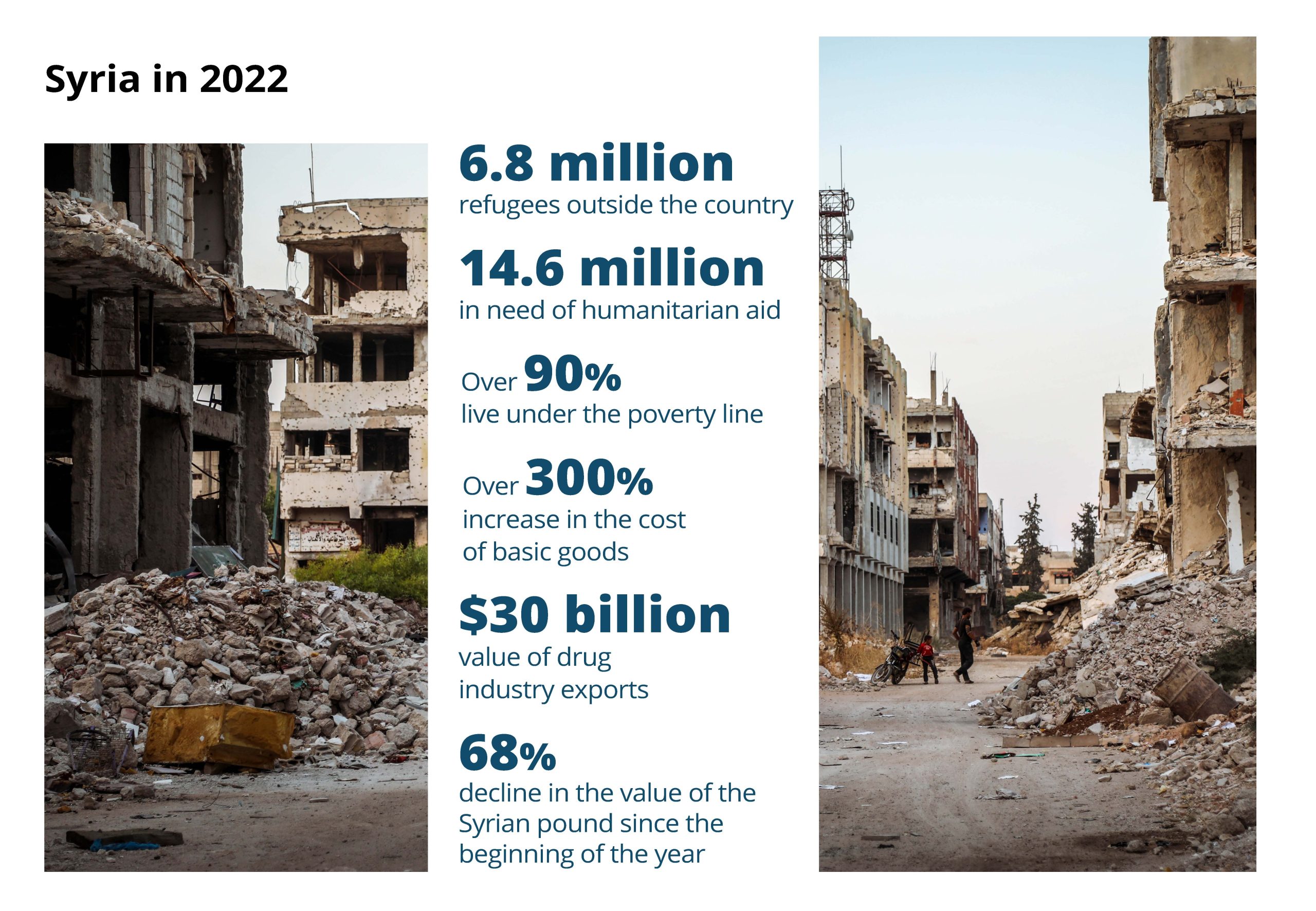
Russia: With most of Moscow’s attention focused on the war in Ukraine, its involvement in Syria necessarily affected. Russia has been forced to thin out its forces for the sake of the fighting in Ukraine, and it even removed one of the S-300 air defense systems from Syria. Nevertheless, this does not indicate a strategic change in Russia’s involvement. Russia continues to play a central role in rebuilding the Syrian army, in diplomatic mediation, and in economic projects, and is expected to retain a sufficient presence in order to guarantee its interests in the arena.
Against the backdrop of the war in Ukraine, Russia’s sensitivity to Israel’s actions in Syria has increased, but to date Israel has retained its freedom of operation in Syria. However, the tightened relations between Russia and Iran, reflected in the Iranian military aid granted to Moscow in the war, has negative potential for Israel. Iran may demand compensation from Russia in the form of expanding its freedom of operation in Syria, and it is even possible that Moscow would agree to defend Iranian assets from Israeli attacks.
Iran: The campaign in Syria waged by Israel in recent years has led to achievements and significantly disrupted the Iranian and Hezbollah military project in Syria. However, the Iranian entrenchment and the transfer of weapons to Syria and Lebanon have continued and evolved in accordance with changing circumstances. Iran is exploiting the economic crisis in Syria in order to deepen its influence there, while providing civilian cover for its military activity. Nevertheless, the attacks attributed to Israel have forced Iran to diversify its methods of operation and smuggling routes, and the Assad regime has striven to restrict this activity within its territory. However, so far these have been measured restrictions that do not indicate an intention to give up on the strategic alliance with the axis. In the background, there has been increased Iranian involvement in civilian spheres such as education and culture, and especially an effort to expand economic collaboration in the fields of energy, industry, and trade.
Turkey began to relay conciliatory messages to the Assad regime, and therein departed from the prevailing lack of significant progress in the normalization measures between Syria and other countries in the region. At the same time, however, Ankara launched another military operation in northern Syria. Also important is the renewal of relations between Hamas and the Assad regime, after more than a decade, with the encouragement of Iran and Hezbollah, which aspire to expand the axis of resistance.
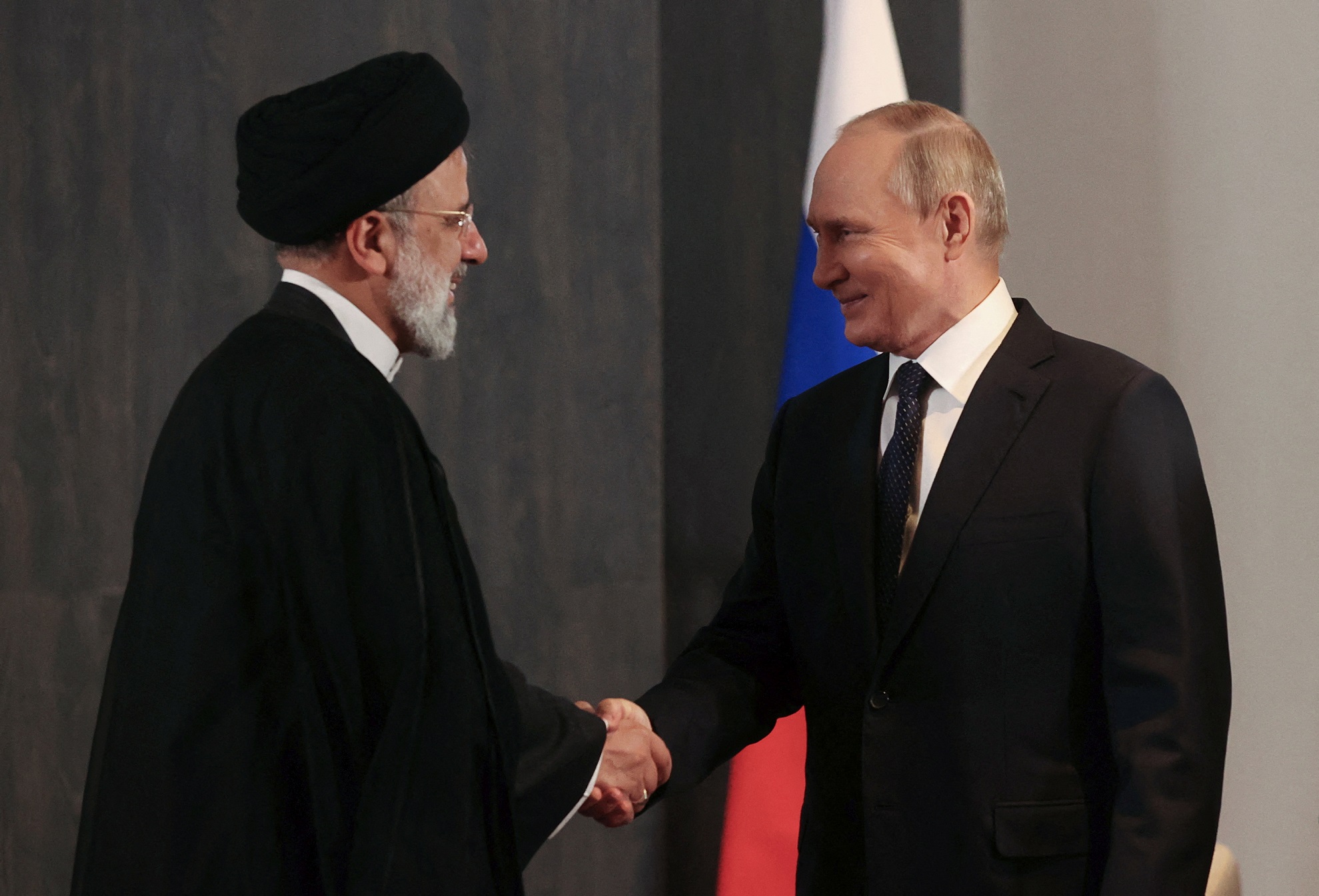
The tightened relations between Russia and Iran has negative potential for Israel. Iranian President Raisi with Russian President Putin, September 2022
Photo: Sputnik/Alexandr Demyanchuk/Pool via REUTERS
The Gap in Israeli Strategy
Despite the achievements of the CBW, Israel has not fully addressed the challenges: Iran, through Hezbollah and the militias it leads, continues to entrench itself deep inside Syria, especially in the country’s east. Although this keeps the threat more distant from Israel, it does not neutralize it and even enables Tehran, through military and civilian means, to create long-term influence. Despite the attacks attributed to Israel, which have led to a decline in the quantity of strategic weapons, the precision missile project in Syria and Lebanon continues. Furthermore, while the CBW takes a toll on the Assad regime, it is not to an extent that leads it to demand the cessation of Iran’s military activity, but rather just to partially restrain it.
In addition, the changes in the international and regional arenas could challenge the continuation of the CBW, especially when it comes to the closer relations between Russia and Iran; the level of legitimacy of striking the regime’s assets; the level of Syrian willingness to absorb hits to its state infrastructure given the expedited rebuilding of the army; and the question of the continued United States commitment to the region, given the series of Iranian attacks against US bases in response to the CBW. The cost of the resources involved in the CBW must be reviewed, possibly even at the expense of long-term solutions, including preparations for war.
Against this backdrop, there is an increased need to formulate an up-to-date and long-term Israeli strategy.
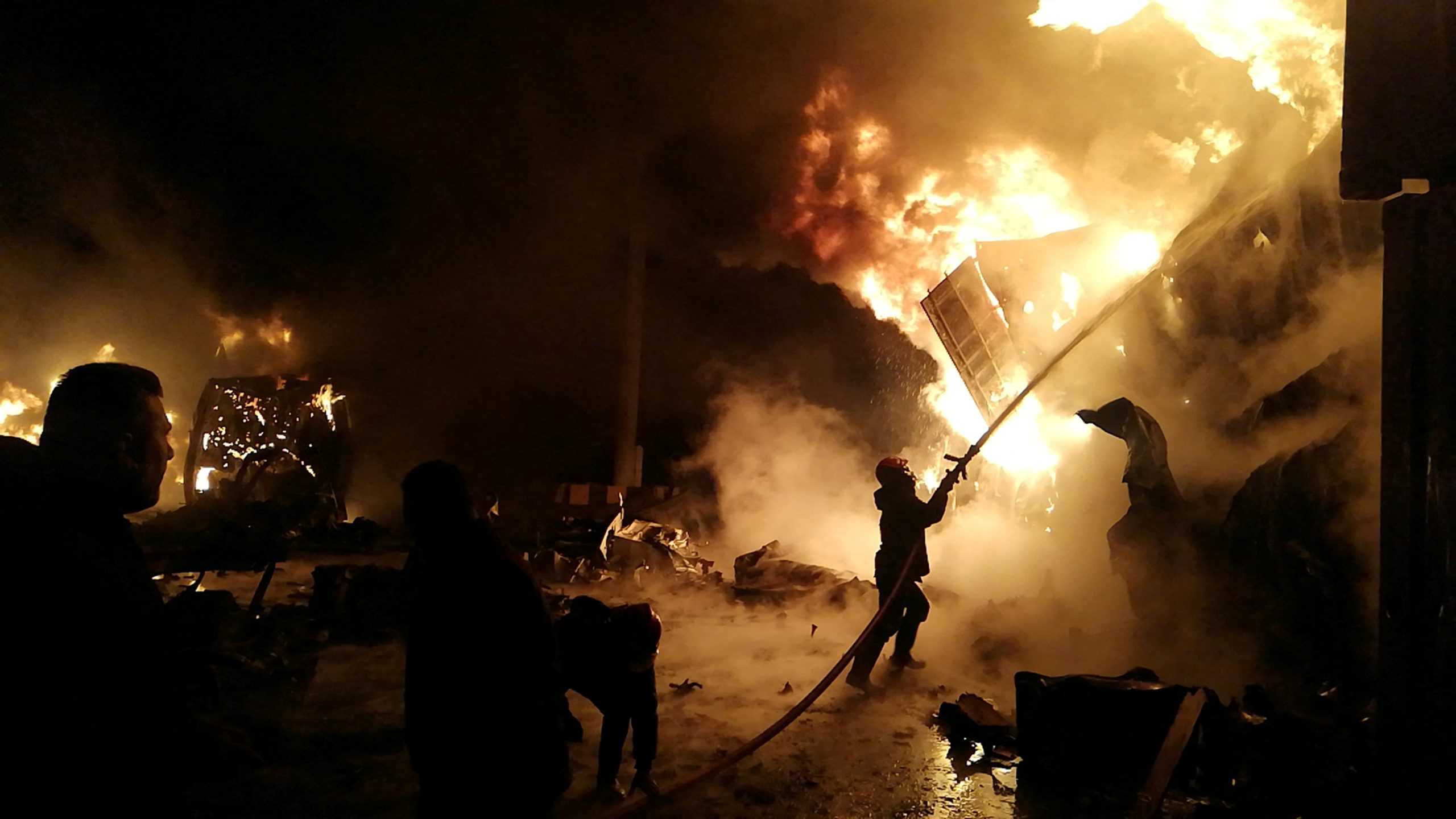
Despite the achievements of the campaign between wars, it has not allowed Israel to address fully the challenges before it. Firefighters dousing a fire caused by an attack attributed to Israel
Photo: SANA/Handout via REUTERS
Strategic Alternatives
- Exercise minimal involvement in Syria – continue the existing policy, which is focused on the CBW.
- Increase the Israeli military and civilian involvement – continue the CBW along with expanding collaboration with local and regional actors vis-à-vis the “four Syrias.”
- Increase political involvement – adjust Israel’s stance toward Assad and engage with him to reduce the Iranian influence.
The choice of Israel’s strategic alternative should be based on three premises:
First, the current situation in a fragmented and decentralized Syria serves the Israeli interest to a large degree, in contrast with a “united Syria,” and obstructs the continued Iranian expansion in Syria. The internal challenges also limit the regime’s ability to rebuild the military, and thus delay an increase in the conventional threat to Israel.
Second, the combined military and civilian challenge that Iran poses in Syria demands a combined response from Israel and an expansion of the set of military tools to include tools that address civilian spheres.
Finally, in the current era in the Middle East, in which “everyone talks to everyone,” Israel must not be left behind. Israel should leverage its standing and connections with the great powers, with the Gulf states, and others to create positive influence that will be translated into impeding the Iranian influence in Syria.
The Recommended Strategy
Implement the second alternative, which includes the continued military effort while attempting to optimize the CBW and improve precision in the territories controlled by Assad. At the same time, Israel should adopt a proactive policy that includes collaboration with state and non-state actors that exert influence and control in other areas in Syria. In addition, Israel should pursue political dialogue and examine the possibility of transferring humanitarian aid to relevant bodies, in order to optimize the impairment of Iran’s activity and increase Israel’s value and influence in the region. This includes the following:
- Coordination with United States must be continued, and the presence of US forces in eastern Syria and at the al-Tanf base in the country’s south help thwart Iranian entrenchment. Israel should support the struggle against ISIS led by the United States and support American-Turkish dialogue to resolve the dispute at the Turkey-Syria border.
- The deconfliction mechanism with Russia must be maintained, to allow continued Israeli freedom of operation and prevent a confrontation between the countries.
- Cooperation and support in the Kurdish region in northeastern Syria should be established via the United States.
- Increase cooperation with Jordan on southern Syria, given the shared challenge posed by the Iranian presence and the smuggling of drugs and weapons from Syria, while examining the possibility of pursuing dialogue with local communities.
- Engage with Turkey and the Gulf states to reduce Iranian influence.


